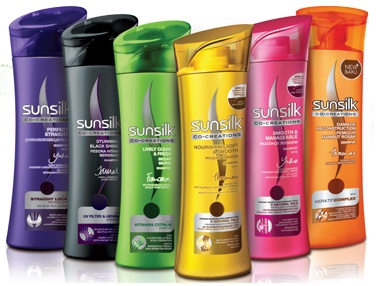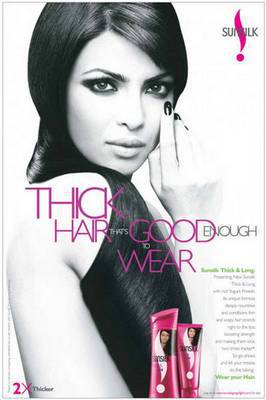The Marketing mix of Sunsilk analyses the 4Ps of Sunsilk, including the Product, Price, Place, and Promotions. Sunsilk is an international brand aimed primarily at women who need hair care. Launched in 1954 in the UK, this leading brand is under the parent company Unilever. This worldwide brand has been projected as a product that will meet all the demands of its consumers. Sunsilk has a unique slogan of its own, “Because Life Can’t Wait, “and its slogan for color shampoo is “Live In colors.” These famous slogans have helped project a strong brand image and create awareness in the hair care market. Its competitors are Pantene, Dove, Clinic Plus, etc.
About Sunsilk
- Type: Hair care brand
- Industry: Consumer goods
- Founded: 1954 by Unilever
- Founders: Unilever employees
- Headquarters: London, England
- Area served: Over 180 countries
- Current CEO: Sunil D’Souza
- Number of employees: Over 10,000
- Major products: Shampoo, conditioner, hair oil, hair styling products
Table of Contents
Sunsilk Product Strategy
Sunsilk includes a wide range of shampoos, styling products, and conditioners under its product portfolio. Sunsilk was introduced as a shampoo that needed just one application for successful hair washing and cleaning. In 1956, Sunsilk for Dry Hair came into the market. In 1958, the brand came up with small-sized polythene tubes that were transparent and were an alternative to a large-sized bottle. In 1960, consumers learned Sunsilk Tonic Shampoo, which helped keep the scalp free and clean from infection. In 1961, Sunsilk re-launched its Sunsilk Liquid Shampoo to Sunsilk Beauty. Within ten years, an anti-dandruff tonic shampoo was also introduced. In 1971, the brand came out with Sunsilk conditioner in three different varieties: greasy, normal, hair texture, and dry. Later, the company introduced Sunsilk styling mousse and, after that, conditioning mousse.
The new Product Mix of Sunsilk in 2023 is as follows (Source).
Here’s a summary of Sunsilk’s product mix, focusing specifically on the different products they offer:
- Shampoo Variants: Dream and Soft Sunsilk Shampoo (Yellow color); Lusciously Thick and Long Shampoo (Pink color); Damaged Hair Reconstruction Shampoo (Orange color); Anti-Dandruff Shampoo (Blue color)
- Specialized Hair Care Products: Products targeting hair fall issues; Variants for color protection; Shampoos and conditioners for volume enhancement; Products focused on damage reconstruction; Specific variants for defined curls; Solutions for straightening and smoothing hair
- Co-Creation with Hair Experts: Collaboration with professional hair experts; Development of new and improved products based on specific hair concerns
Sunsilk Place Strategy
Sunsilk products are available in at least sixty countries of the world. It is an international company with a strong network in India, Thailand, Indonesia, Sri Lanka, Bangladesh, Argentina, Pakistan, and Brazil. Although it started production in the UK, it has successfully penetrated such a large market. Unilever has set up a team for market segmentation. This helps them to decide the right market for their product. In geographic segmentation, they divided the markets into units, and in demographic segmentation, they divided the market into various groups like gender, age, and family size. Accordingly, they decided on a marketing mix for each particular market. Their distribution strategy is extensive as they cater to a mass market.
The producers of Sunsilk use an organized distributive channel to make their products available to the customers. The services of intermediaries such as wholesalers, retailers, and agents are used to dispatch the goods to the consumers. Channel distribution also depends upon the size of the market and the number of purchases in that region. Warehouses are maintained for quick dispatch to the required area. Thus, the distribution channel is from merchants to intermediaries to the consumers. Sunsilk products are found in various convenience stores and supermarkets. The most important is the grocery stores because they are huge in number and the most common place where an individual can easily purchase. These retail shops are small-scale but are scattered in every town, village, city, and metro, giving easy accessibility to the consumers.
Here’s a summary of Sunsilk’s place strategy in five bullet points:
- Global Presence: Sunsilk is available in approximately 80 countries, showcasing its global market reach and brand popularity. However, it is notably absent in the USA and Canada, having discontinued its offerings almost a decade ago.
- Omnichannel Distribution Approach: The brand employs an omnichannel strategy, ensuring its products are accessible through multiple channels. This approach helps reach a broader customer base and caters to varying shopping preferences.
- Retail and E-commerce Platforms: Sunsilk products are available in various retail formats, including convenience stores, supermarkets, and grocery stores. They are also widely available on several e-commerce platforms, enhancing consumer accessibility.
- Market Penetration Strategy: Sunsilk has successfully penetrated large markets with a strong distribution network. Their presence in diverse geographical locations demonstrates an effective market penetration strategy.
- Adaptation to Market Size: Sunsilk’s distribution strategy is adapted according to its size. The brand can effectively cater to mass markets and niche segments depending on regional demand and consumer behavior.
Sunsilk Pricing Strategy
In today’s competitive market, surviving against indirect and direct competitors is difficult. Sunsilk has realized that it is in a highly elastic situation. It means that any price increase will directly affect the product demand and benefit the competitors. The pricing policy depends on various factors like actual cost, market supply, demand, competitors’ prices, and the quality of the product.
Sunsilk’s pricing strategy is critical to its overall marketing approach, reflecting a blend of market competitiveness and consumer value. Analyzing their pricing and marketing strategy also reveals several vital facets:
- Market Penetration Pricing: Initially, Sunsilk may use penetration pricing to enter new markets or launch new products. This involves setting lower prices to attract a broader customer base and establish a foothold in the market. Over time, as the brand gains recognition and loyalty, it can adjust prices upwards.
- Competitive Pricing: Sunsilk operates in a highly competitive market, so its pricing strategy often aligns with industry standards. The brand sets prices comparable to its competitors, ensuring it remains an attractive option for price-sensitive consumers.
- Product Line Pricing: Sunsilk employs product line pricing, where different products within its range are priced differently based on their formulation, target segment, and perceived value. Premium variants, like those co-created with hair care experts, may be priced higher than standard ones.
- Promotional and Discount Pricing: Sunsilk periodically uses promotional pricing strategies, offering discounts, bundle deals, or special offers. This boosts short-term sales, helps clear inventory, and attracts new customers.
- Region-Based Pricing: Considering the vast geographical spread of Sunsilk, the brand likely adopts region-specific pricing. This approach considers local economic factors, purchasing power, and competitive dynamics, tailoring prices to fit different markets.
Sunsilk Promotion Strategy
Sunsilk has been very proactive about its promotional activities, and hence, it started its television advertisement as early as 1955 with a campaign focusing on hair problems. In 1960 “John Berry” composed a tune for the television commercial “The Girl with the Sunsilk Marketing in Her Hair, “which became so popular that it was later made into a pop single. In 1969, commercials were aired on the radio presenting “Derek Nimmo” for supporting the Sunsilk Herb Shampoo, and in the 1970s, the slogan “All you need is Sunsilk” became highly popular.
The advertisements for this brand can be viewed in many magazines and newspapers. Still, in 2003, in Argentina, it launched its magazine featuring professionals in the hair industry answering problems and solutions for hair care. The product is promoted in various print media and ads by emphasizing its functional benefits.
In 2008, an ad campaign featuring Marilyn Monroe, Shakira, Natalia, and Madonna was launched with the tagline “Hair On = Life On.” In Pakistan, the brand ambassador for Sunsilk is Model “Humaima Malick,” and in Sri Lanka, the brand has roped in “Yureni Noshika” as its ambassador.
Actor “Priyanka Chopra” is the face of the brand in India and Australia; she is a singer, “Delta Goodr m.” The British brand “Girls Aloud” in 2007 associated itself with Sunsilk in a very lucrative sponsorship digital marketing deal.
Sunsilk has kept the packaging of its products distinct. All the shampoos are recognizable to the target consumer with their distinct coloring, as the various colors represent the various features and effects of the product. This has helped the brand create a separate and distinguished image in the minds of consumers.
Some Recent Video ads and Print ads for Sunsilk are:
Liked this post? Check out the complete series on Marketing Mix

